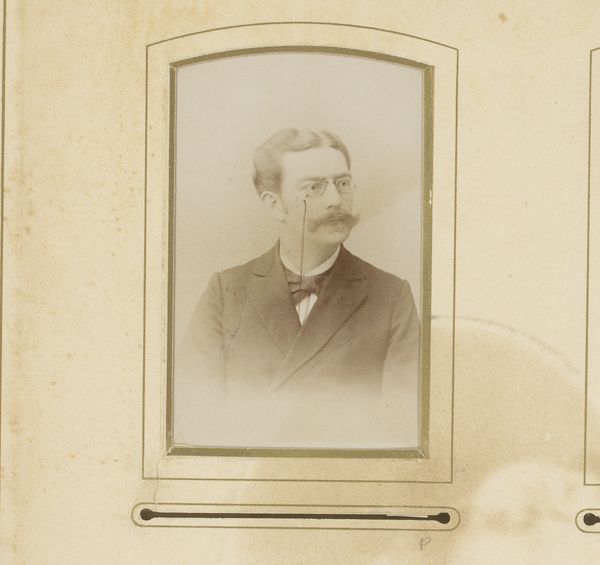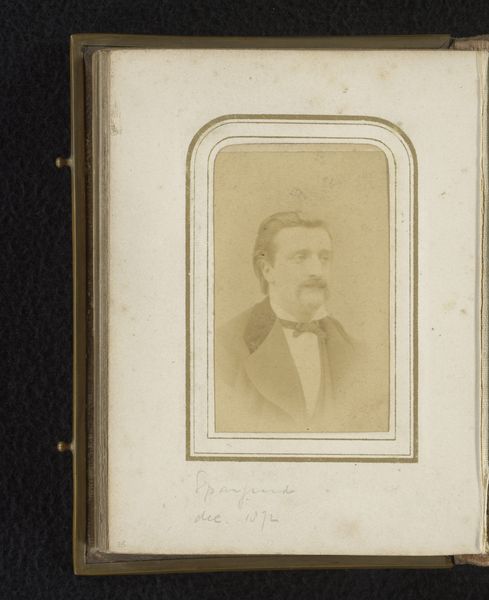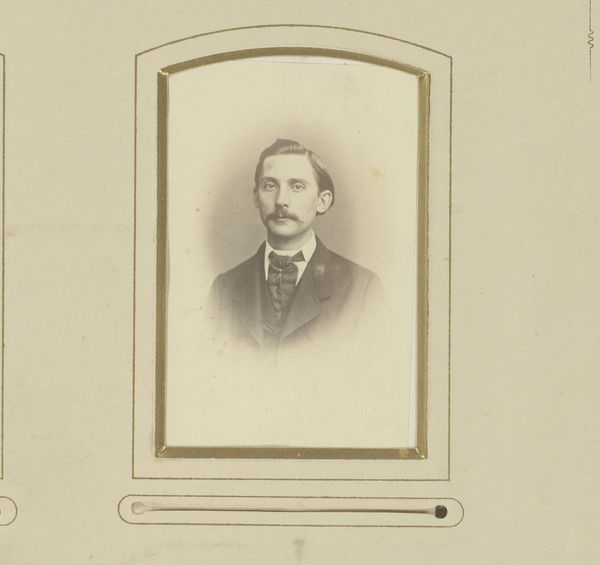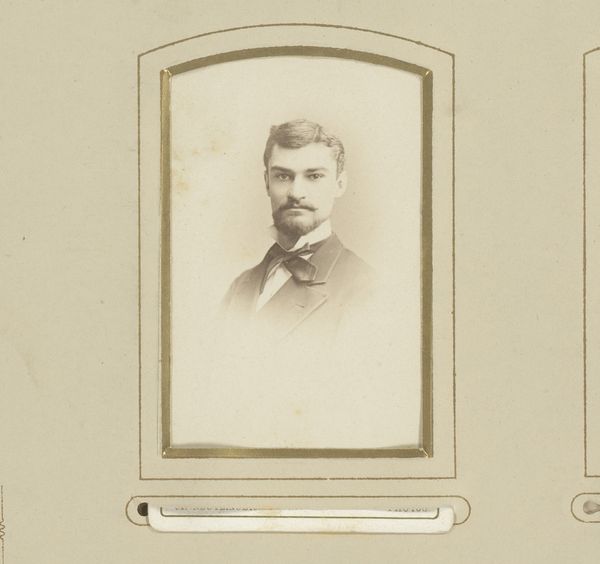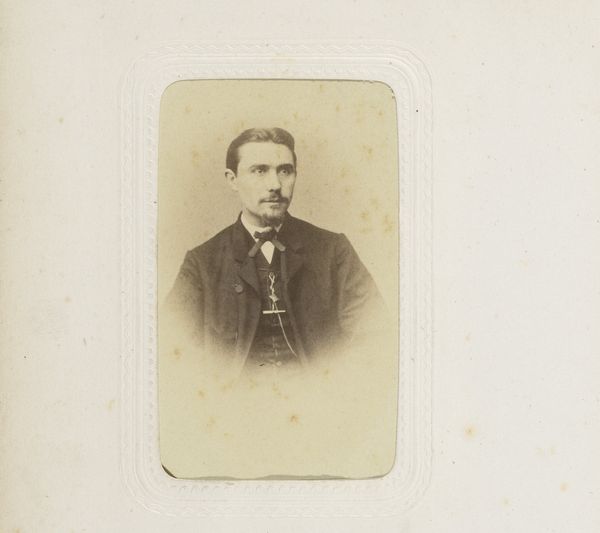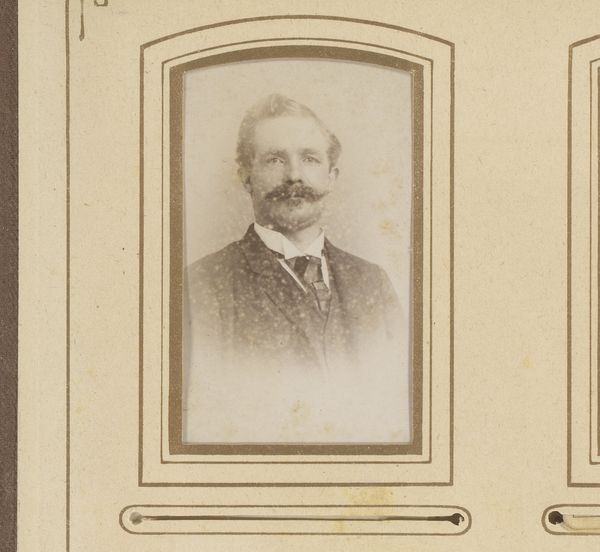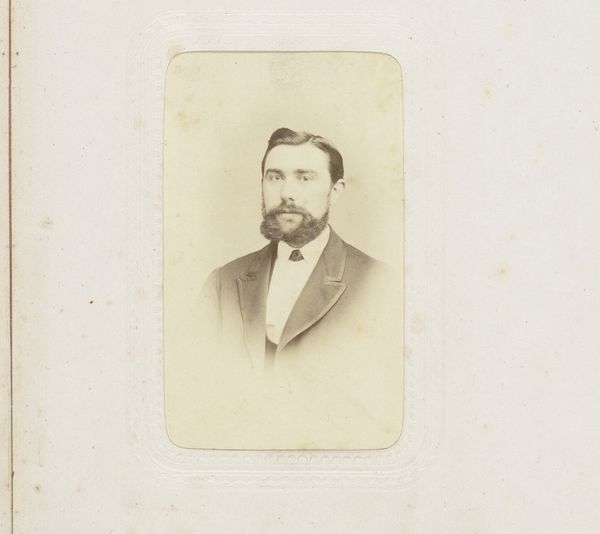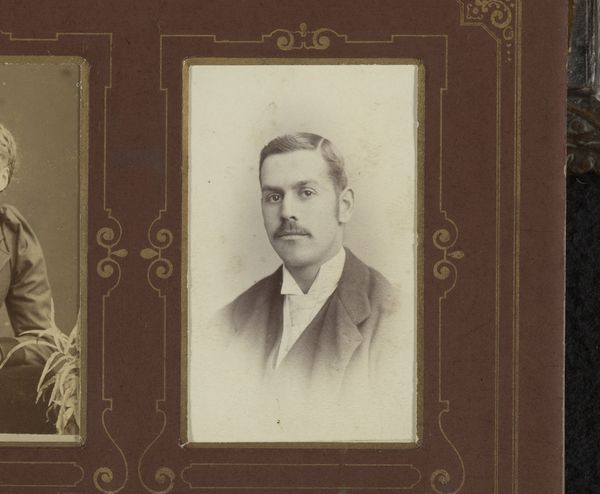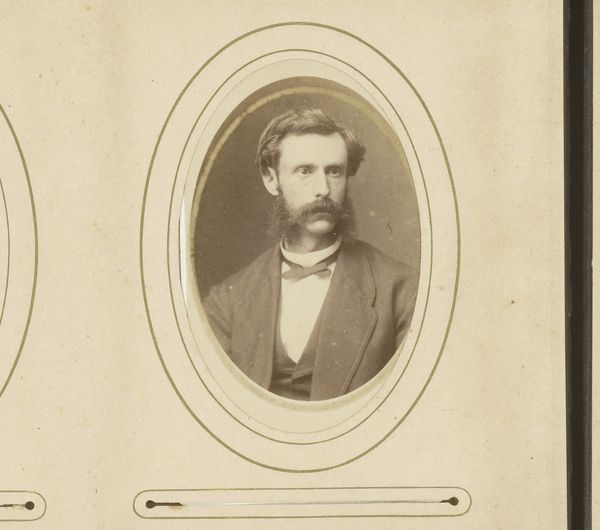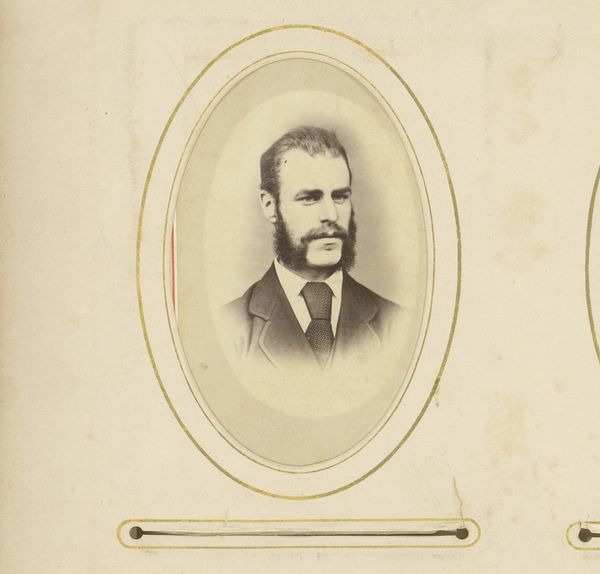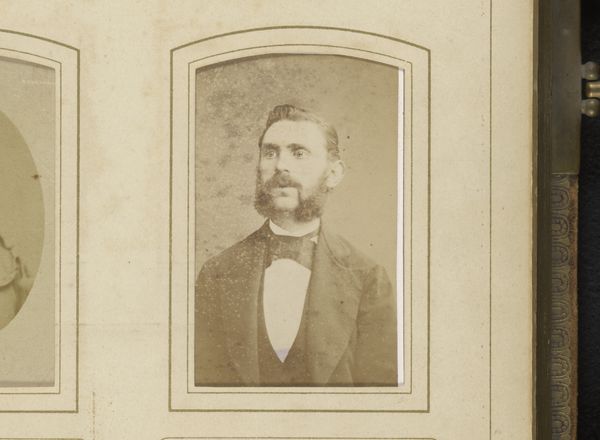
photography, albumen-print
#
portrait
#
aged paper
#
toned paper
#
photography
#
19th century
#
albumen-print
Dimensions: height 82 mm, width 50 mm
Copyright: Rijks Museum: Open Domain
Curator: Here we have an albumen print, "Portret van een man, aangeduid als A. Verhagen," dating somewhere between 1864 and 1883, by the photographer Leonard Stollenwerk. Editor: It has an air of profound self-importance about it, doesn’t it? That stern gaze, amplified by the carefully groomed mustache… It seems deliberately crafted to project a certain kind of power, or perhaps more accurately, an appeal to middle-class respectability. Curator: I see it as a product of its time; photography becoming increasingly accessible and, therefore, a new way to participate in shaping and controlling your own public image. The sitter is identified, giving it further social context, implying a person of some social standing, wanting to be remembered. Editor: And controlled is exactly the right word. The stiffness, the formality... I mean, consider the performance of masculinity on display! Bowtie perfectly straight, hair meticulously styled. What stories are we not being told, what emotions are being deliberately suppressed? Curator: Well, consider also the broader history of portraiture. Before photography, having your portrait painted was the exclusive domain of the wealthy elite. Photography allowed access to wider section of society, for whom these portraits could also serve a similar function: self-definition, assertion of status, leaving an historical footprint. Editor: But this wasn't just about democratizing representation, was it? It’s also about constructing narratives, perpetuating existing power structures through carefully managed visual cues, what you call the "assertion of status" but with that carries its own baggage about what kind of men where considered worthy of that portrayal in those days. Curator: Indeed. The sitter likely had specific motivations behind commissioning such an image. Photography during that time carried significant weight, given how it circulated as small prints for private circulation, almost exclusively reinforcing social values. Editor: Precisely. A potent reminder that art—even what seems like a simple portrait—never exists in a vacuum. Curator: So true. Editor: Seeing this piece encourages me to continue dismantling dominant historical paradigms to allow for fuller representations. Curator: And for me, it showcases photography's continuing role as a means of expression and representation in constant evolution.
Comments
No comments
Be the first to comment and join the conversation on the ultimate creative platform.
